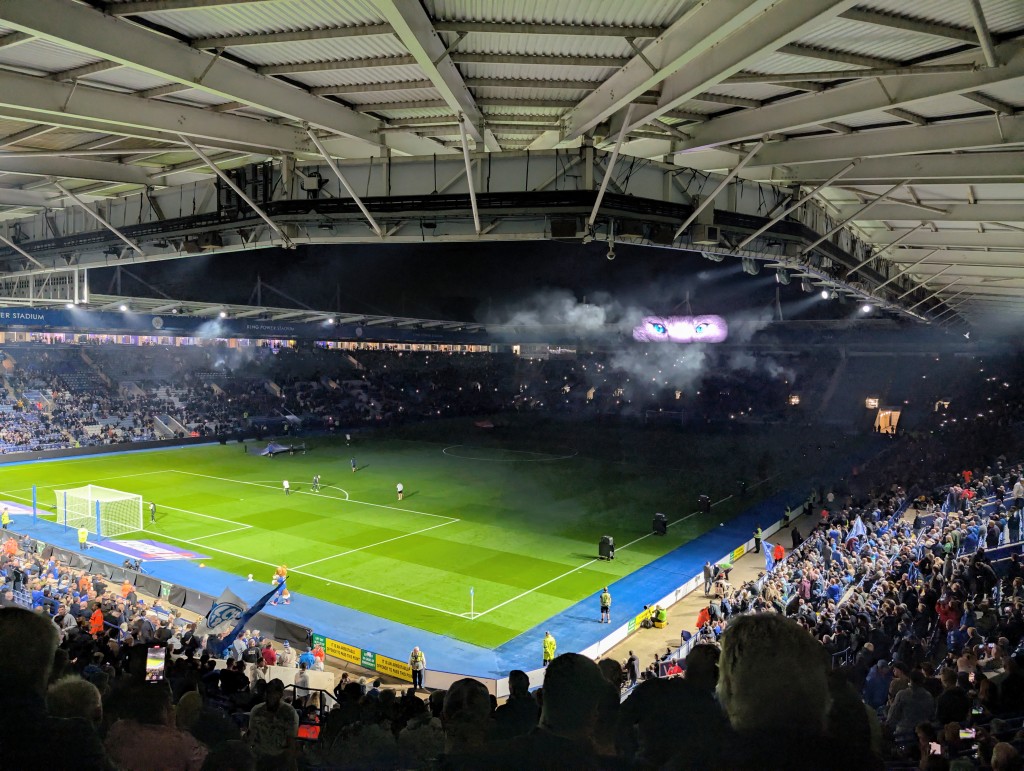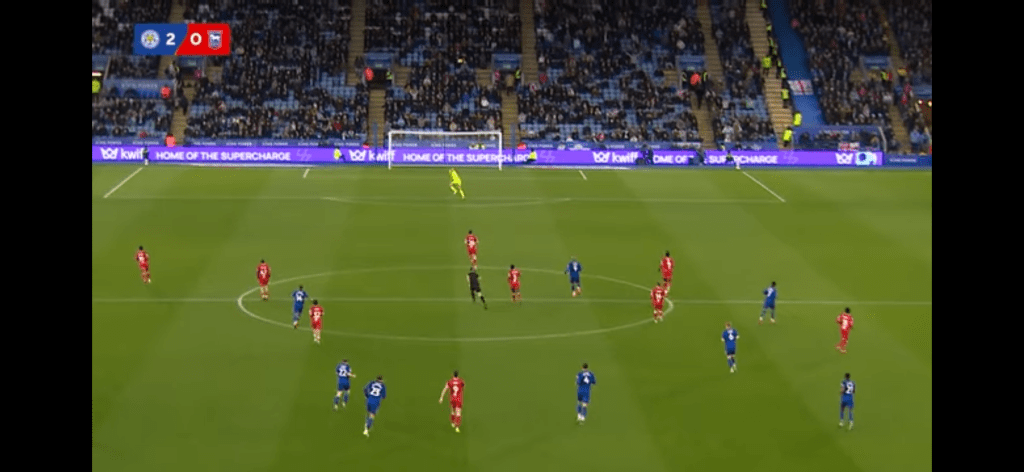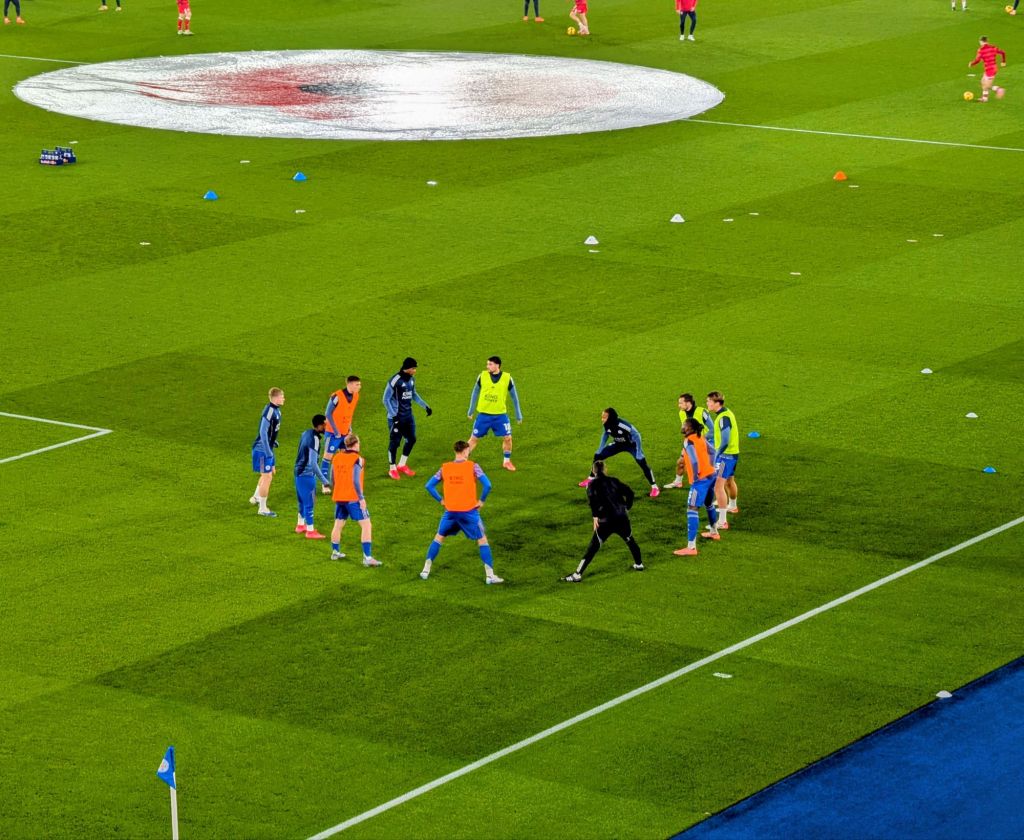Our second Foxy Figures looks at Leicester’s defeat to Arsenal and reviews the season so far. Warning: xPositivity is in short supply.
In the aftermath of Saturday’s defeat at the Emirates, there’s been a lot of talk about how the second half comeback was a positive sign for Steve Cooper. A signal that the tide might be about to turn, how it showed how this team was different to the side that got relegated two years ago.
Not to call anyone out, but we are talking about, for example, Rob Tanner in the Athletic.
Leicester, without a league win this season, could have succumbed, rolled over and accepted their fate.
The fact that they didn’t, that they showed more hunger and desire in the second half, and quality — especially through James Justin’s stunning volley for the equaliser — should provide heart.
This sort of attitude has been recreated elsewhere. The idea that Leicester showed some fight and were a little unlucky. That it shows how we are better than results suggest.
To put it bluntly, this is wrong. It’s deluded, wishful thinking, and a good example of why you sometimes have to look past the final result to see the full picture.
The reality is that Arsenal vs Leicester was astonishingly one-sided. A deflected header and an unbelievable finish out of nowhere shouldn’t convince you otherwise. Leicester’s overall performances so far this season have been terrible, and we are fortunate to have any points at all.
Strap in.
The thrashing that never was
One way to read Expected Goals (xG) is as a kind of ‘luck’ rating. If you significantly outperform your xG number, you’ve been lucky (or your strikers had a great day, or their ‘keeper had a terrible day: you get the point). In one-off games, these vagaries of fortune can lead to some pretty weird results.
Over time, the luck balances out and you usually regress to the mean – a few hot streaks meet a few cold ones and the xG numbers over the course of a season tell you how good a team is overall.
What you often notice when you look at the xG for individual games is that big wins are a bit of a perfect storm, where one team has scored a lot of relatively low quality chances. When Liverpool beat Bournemouth 9-0, for example, they had an xG of around 4. In the World Cup semi-final, Germany had an xG of 3.1.
Remember that game where Leicester lost 5-3 at Craven Cottage? We actually ‘won’ the xG in that game, with Fulham scoring five times when they ‘should’ have scored 1.75 goals.
This is not what happened on Saturday. Instead, Arsenal underperformed their expected goals figure, despite scoring four times. Not only that, but the ‘final scoreline’ of 6.08 – 0.32 is one of the most outrageously one-sided xG results I’ve ever seen.
Over the last two seasons, only one team has amassed an xG above 6. That was Liverpool against Newcastle last season, in a game that also finished 4-2 (the xG result was 6.67-0.91). Though we should perhaps note that this encounter took place on New Year’s Day, and the figures aren’t Jagerbomb-adjusted.
Not only that, but even an xG of more than 5 is vanishingly rare. Newcastle (5.11) managed it when they beat Sheffield United 8-0, Liverpool (5.66) did so in beating Wolves 2-0 on the last day of last season. And, amusingly, Spurs (5.41) actually did it this weekend against Manchester United*.
So we need to cool down any talk about mentality, fight, and refusing to lay down to face the reality that Leicester were fortunate not to take an historic hammering in North London.
Partly the high xG in this case reflects the game state: Arsenal were obliged to keep attacking with the game at 2-2, which they probably wouldn’t have done if they were leading. But ultimately the takeaway is that Leicester were extremely lucky – both not to concede more but also to have scored at all ourselves.
Propping up the league
Arsenal was just one game, and the sheer volume of shots and chances Leicester gave up has skewed the season-long figures a bit. We’re only six games in, and so one has a much larger impact on the overall data than it would after 20 or 30 games.
With that said, Leicester have ‘lost’ the xG in every single game so far. Only Spurs on the opening day and Everton a couple of weeks ago have been remotely close, the others have been comprehensive defeats in terms of chances created.
This means that the overall picture is bleak. Leicester have currently have taken the fewest shots (52) and have the fewest expected goals for (4.31) in the Premier League.
We’ve also conceded the most shots (115) and have the highest expected goals against (12.75).
In plain English: we are giving up lots of chances and creating very few of our own.
This, needless to say, is not good.
It’s also one of those situations where the data backs up the frustration directed at Cooper and his tactics (or lack thereof) so far. We have a manager who seems to be approaching games from the perspective of ‘safety-first’, which results in very little attacking output. But that approach is not providing the main advantage of such a strategy, which would be a good defensive record.
If you are inclined to be positive, you can point to the fact that we’ve played three of last season’s top five already. Perhaps against weaker opposition, the numbers will improve. But you’d hope to have some area of the pitch to hang your hat on.
Wolves, for example, have also played three of last season’s top five, but their underlying defensive numbers rank 11th in the league. Their xG against (9.75) is virtually the same as Newcastle’s, but they have conceded 9 more actual goals than the Magpies – this is the sort of gap you would expect to see close over time.
Leicester don’t have anything like that. By almost every measure, we are the worst team in the league: we’ve had the fewest passes in the final third and the second fewest touches in the box, we’ve given up the most touches in the box to the opposition.
Set pieces, again
This even extends to our old friend, the set piece. We talked last time about how this was an area to watch with a new coach in-situ. Three games in, the early results hadn’t been great.
Six games in, they still aren’t.
Leicester have only conceded one goal from a set piece so far according to the stats (Amadou Onana for Aston Villa, own goals are not included). But the 37 shots our opponents have had from them is comfortably the most in the division – Fulham are next with 31 conceded – and the xG against of 3.4 is second most, only surpassed by Southampton’s 3.82.
Going forward, things are a little better, but once again we’re forced to confront the reality that we are outperforming our underlying numbers.
Leicester have scored three goals from set pieces, but this is from an expected goals number of 1.16. This, and stop me if you’re getting tired of hearing it, is the third lowest in the league, behind only Liverpool and Chelsea.
There are a few other sides who have scored the same number of goals from dead ball situations, but their expected performance highlight the difference. Everton (3 goals from 2.65 expected), Arsenal (3 from 2.57 xG) and Aston Villa (3 from 2.55 xG).
Perhaps Leicester have found the magic elixir, or maybe this is a small sample size and primed for a bit of regression.
Shots, shots, shots
Let’s move forward and look at what the lack of attacking threat means for Jamie Vardy.
Right now, Jamie Vardy is averaging 0.54 shots per game. That means, according to the local maths genius, he’s having one shot every two games.
(It is worth reiterating at this point what this means: Jamie Vardy has taken three shots so far this season. Three.)
Maybe this is good? Maybe, once we add some context in, we’ll learn that 0.54 shots per game and three shots all season is actually an incredibly impressive number of shots for your #9 to be taking?
Sorry to be the bearer of bad news, but there are 172 players in the Premier League averaging more than 0.54 shots per game (min. 180 minutes played). Vardy’s ranking of 173rd in terms of shots per game sees him cosily nestled between Andy Robertson and Axel Tuanzebe. It also means he’s taken fewer shots than three quarters of Leicester’s own back four: Wout Faes, Caleb Okoli, and James Justin.
If we compare that figure to the other starting strikers among the stinky six at the bottom of the league, the picture is equally bleak – all of these players have also made six appearances so far*.
We have
-
Cameron Archer (3.41 shots per game)
-
Dominic Calvert-Lewin (2.28)
-
Liam Delap (1.71)
-
Jorgen Strand Larsen (1.46)
-
Jean-Philippe Mateta (1.44)
-
Jamie Vardy (0.54)
The raw shot numbers are obviously not everything: it is possible to score goals without taking lots of shots. But there is some truth to the cliche that you can’t win the lottery without buying a ticket. Unless Vardy is going to score from virtually every shot – which, ironically, he has done so far – he’s not going to score any goals.
There are other players who are taking shots: Abdul Fatawu (2.02), Jordan Ayew (2), Stephy Mavididi (1.79 per game), and Facundo Buonanotte (1.53) have all offered something. But it may not surprise you to learn that some of these are pot-shots at best.
Fatawu, triumphantly, leads the entire division in terms of average shot distance. His six shots so far have come from an average of 36.1 yards from goal, almost four whole yards further out than his closest competitor, Pervis Estupinian.
The big trend in modern football is of teams trying to create higher quality shots. A big part of this is trying to literally shoot from closer to the goal. Fatawu is heroically bucking that trend: all of his six shots combined have generated 0.1 xG. At that rate, he would need to take 60 shots to generate a single goal – something that will be particularly hard to do from the substitutes’ bench.
The vision for this series was to find some data points that taught us something new about Leicester’s season. Through six games, the most notable thing has been the way in which the data backs up the most reactionary, Cooper Out position.
A couple of years ago, you could convince yourself that Leicester were quite unlucky under Brendan Rodgers. They ‘underperformed’ their expected results to the tune of 11 points. If we were using the underlying data to inform the decision over whether to sack him then, there is a coherent reason why it took so long.
Of course, some of the ‘bad luck’ was down to extremely poor decisions, such as replacing your good goalkeeper with a bad one, and then playing the bad one incessantly until March. If your goalkeeper lets in shots that most people don’t, you are going to concede more goals than the data thinks you should.
Regardless, it was possible to convince yourself, if you were a decision-maker at the club, that the luck would turn.
We only have a small sample size to go on so far. Things can change, teams can improve. But there is no similar reason to believe in the overall process. Perhaps Cooper can be the man to turn this team around himself, but there need to be drastic changes to produce different results to those we have seen so far.
If you’re lucky and good, that’s one thing. To be lucky and bad is a recipe for disaster.
*All this data is from https://understat.com/.
document.getElementById(‘newsnowlogo’).onclick=function(){ window.open(‘https://www.newsnow.co.uk/h/Sport/Football/Premier+League/Leicester+City’,’newsnow’); }; document.getElementById(‘newsnowlogo’).style.cursor=’pointer’; document.getElementById(‘newsnowlogo_a’).style.textDecoration=’none’; document.getElementById(‘newsnowlogo_a’).style.borderBottom=’0 none’;










Leave a comment